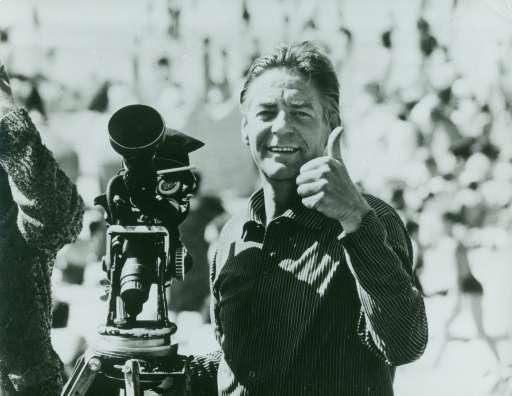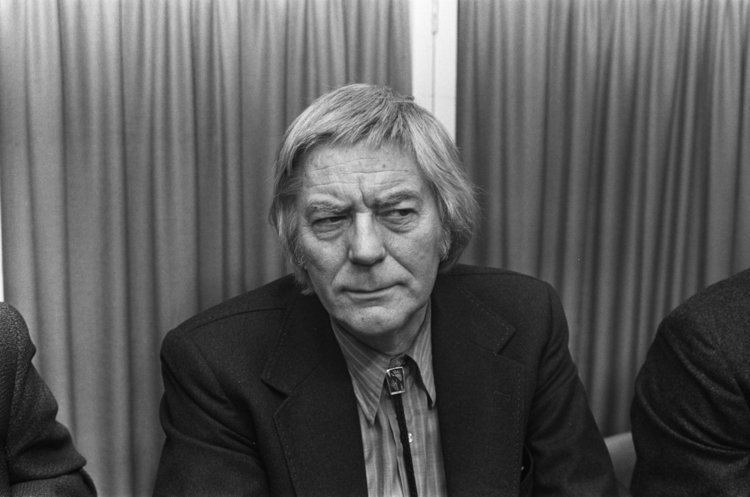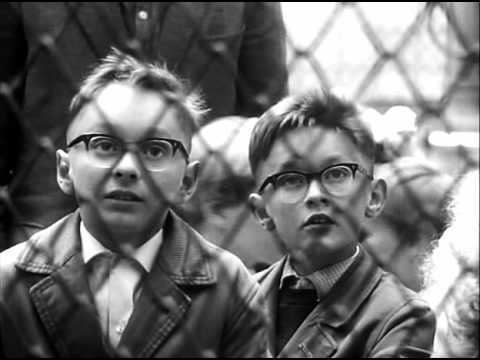Full Name Albert Haanstra Website www.berthaanstra.nl | Name Bert Haanstra | |
 | ||
Years active 1948–1988 (film director) Spouse Angenieta Barendiena Wijtmans (m. 1944–1997) Children Jurre Haanstra, Rimko Haanstra Parents Jansje Schuiveling, Folkert Haanstra Movies Fanfare, The Human Dutch, Glass, Ape and Super‑Ape, Mirror of Holland Similar People Anton Koolhaas, Simon Carmiggelt, Jurre Haanstra, Kees Brusse, Rimko Haanstra | ||
Bert haanstra glas
Albert 'Bert' Haanstra ( [ˈɑlbərt bɛrt ˈɦaːnstraː]; 31 May 1916 – 23 October 1997) was a Dutch film director of films and documentaries. His documentary Glass (1958) won the Academy Award for Documentary Short Subject in 1959. His feature film Fanfare (1958) was the most visited Dutch film at the time, and has since only been surpassed by Turkish Delight (1973).
Contents

Bert Haanstra - Nederland (1983) HQ
Early life

Albert Haanstra was born on 31 May 1916 in Espelo, a small village near Holten, in the Netherlands. His father was Folkert Haanstra, a schoolteacher, and his mother Jansje Schuiveling. Haanstra grew up in the village of Goor. Haanstra's father retired early as a schoolteacher and started his life long dream of becoming a painter. Haanstra himself, after realizing teaching didn't interest him, became a painter himself and started experimenting with photography.

Through his fascination, Haanstra became friends with a local cinema owner who eventually would let him see movies for free from the projection room, where Haanstra's desire to dabble in cinema would grow. He was later accepted into Royal Netherlands Academy of Arts and Sciences but would subsequently turn it down as he felt that the long years of study would be nothing in comparison to real life experience. During his later employment as a press photographer, Haanstra experimented in staged photography, where he would create his first film, Catfish.
Career
Haanstra became a professional Dutch documentary film maker in 1947. He won international acclaim with his short documentary Spiegel van Holland (Mirror of Holland), for which he received the Grand Prix du court métrage at the Cannes Film Festival of 1951. During the fifties he made six films for Shell, among others The Rival World (1955) on insects spreading deadly diseases and how to fight them. In 1958 his documentary Glass, a filming improvisation made in a glass factory, won an Academy Award for Best Documentary Short Subject.
He directed several fiction films. Fanfare, a comedy situated in a small Dutch village, is still the Netherlands' second most popular film ever (measured at the box office), only surpassed by Paul Verhoevens Turkish Delight. Abroad however, Fanfare was hardly noticed, but it was entered into the 1959 Cannes Film Festival and the 1st Moscow International Film Festival.
After Fanfare, he continued his artistry in directing another short film called, Zoo. It was released on the 14th of December, 1962. A film which compared the behavior of animals and humans through his always appreciated humoristic fashion. As always, Haanstra continued to experiment with his cinematic techniques. In Zoo he experimented with hidden camera filming to capture he true nature of both man and beast. In 1963, Zoo was nominated for the BAFTA Film Award in Holland for Best Short Film.
In several shorts and in long documentaries like Alleman / The Human Dutch and Stem van het water / The Voice of the Water Haansta reflected on The Netherlands and its inhabitants. All these films made him one of the most popular filmmakers in the history of Dutch cinema. The documentary Alleman was seen in the cinema by 20 percent of the total Dutch population. In the seventies and eighties Haanstra addressed a new subject. He made several films about animals. In the long documentary Bij de beesten af / Ape and Super-Ape (1973), for which he collaborated with Frans de Waal and Jane Goodall, among others, he compared the behavior of animals and human beings. In total Haanstra received close to a hundred awards.
Haanstra was Officer in the Order of Orange-Nassau.
Death
Haanstra died on 23 October 1997 at the age of 81 in a nursing home in the town of Hilversum in the Netherlands. He died of Alzheimer's disease.
